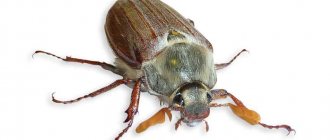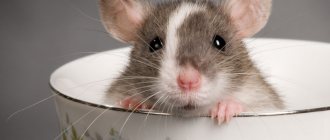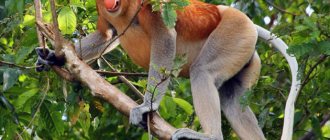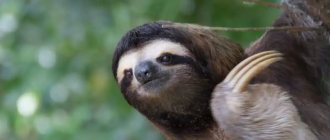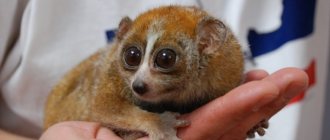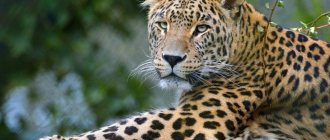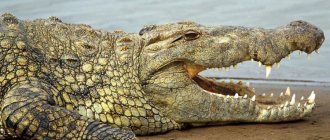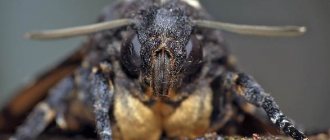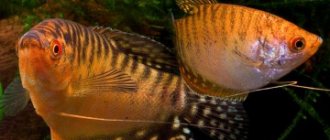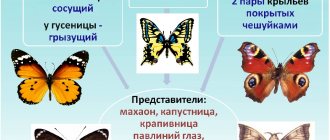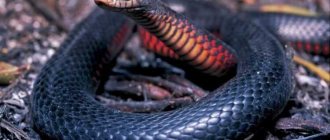Numerous orders of insects are conventionally divided into two groups. In representatives of the first group, the larvae emerging from the egg are similar to adult individuals and differ from them only in the absence of wings. These include cockroaches, grasshoppers, locusts, bedbugs, praying mantises, stick insects, etc. These are insects with incomplete transformation. In the second group, the eggs hatch into worm-like larvae, completely different from their parents, which then turn into pupae, and only after that do adult winged insects emerge from the pupae. This is the development cycle of insects with complete transformation. These include mosquitoes, bees, wasps, flies, fleas, beetles, caddis flies, and butterflies.
Types of butterfly eggs
Butterfly eggs come in various shapes - round, flattened, oval, spindle-shaped, smooth or with a cellular surface, covered with spines or ribs. The color of the eggs is also different, most often whitish, light green or yellow, in addition, brownish, brownish-violet, reddish. The eggs of many species change color as they develop.
The manner in which eggs are laid may differ among different species of butterflies. Eggs can be laid one at a time or several at a time, or in large groups, up to several hundred in one clutch. Eggs can be laid on leaves, stems, flowers, fruits of plants, in cracks in tree bark, on soil, lichens, and on dry plant remains. After laying, females of some species cover their eggs with hairs from their abdomen.
Caterpillar structure
The body of caterpillars consists of thirteen segments, of which three are thoracic and ten are abdominal. The thoracic segments bear a pair of jointed legs; the abdominal segments usually have five pairs of false legs; some types of abdominal legs have two or three pairs, or they are underdeveloped. The appearance of caterpillars is very diverse and often differs even among closely related species.
Many are brightly and variegatedly colored, some have outgrowths in the form of horns, spikes, and bumps. The surface of the body is smooth with sparse scales or covered with dense hairs, warts, and spines. Body proportions also vary: some caterpillars are short and thick, others are thin and long.
Ursa
The front wings of this butterfly are dark brown, the span is 50 - 80 mm. The hind wings are red-yellow with black or dark blue spots. Dipper caterpillars are densely covered with brown hairs, which is why the butterflies got their name. Caterpillars feed on plants, some of which are poisonous. The poison accumulates in their body and remains in the body even after the caterpillars turn into butterflies. The venom of some species can be fatal to small animals.
Ursa
What do caterpillars eat?
Caterpillars of most butterfly species feed on green parts of plants - leaves, flowers, unripe fruits. Some develop inside branches and trunks, feed on wood, on lichens and dead parts of plants, on animal remains such as wool, down, feathers, and also on wax.
Some species are predatory, feeding on ant larvae and scale insects.
Number
As we previously noted, there are about one and a half hundred thousand known species of butterflies in the world. Yes, just with a reservation, because scientists claim that there are approximately the same number of unknown or recorded species on the entire planet.
At the same time, many people do not know for sure how long butterflies live. In fact, it is difficult to give an exact figure, because some species live for about six months, while others can live for a whole year.
Transformation of a caterpillar into a butterfly - the pupa stage
Pupation is the most vulnerable process in the butterfly's development cycle, and most caterpillars prepare carefully for it. The pupal stage in different species can last from several days to several years. A long pause (stop in development) of pupae is an adaptation that allows the species to survive unfavorable years. If in the first year unsuitable conditions arise and the butterflies emerging from the pupae die, the population is replenished by previously diapausing pupae that emerge the next year.
The butterfly formed inside the pupal shell has very short, soft wings. When emerging from the pupa, it needs to climb onto some vertical surface in order to hang its wings, which will give them the opportunity to straighten. After which the wings gradually harden, and during this time the butterfly sits motionless.
When is it dangerous to help?
One day a man found a butterfly cocoon and took it home. He decided to observe the transformation process. The cocoon opened, and for several hours in a row this man observed the difficulties the butterfly had to go through in order to get out. She tried to get out through the small hole for quite a long time and suddenly the moment came when it seemed to him that the butterfly had given up and stopped fighting. It looked like she was stuck and completely motionless.
Taking pity on her, the man decided to help her and cut off the cocoon. Thanks to this, the butterfly got out of the cocoon, but its body was swollen like a caterpillar, its wings were small and unopened. The man expected her wings to strengthen and grow and her body to transform, but nothing else happened. The butterfly pitifully dragged its swollen body in a circle, now doomed to do this for the rest of its life.
Man, out of his kindness, did not understand that he had interfered with the natural process of nature. The efforts that the butterfly made were simply necessary for metamorphosis. Making its way through the narrow opening of the cocoon, the liquid from the butterfly's body would pass into the wings, making them large and strong for flight. By depriving the butterfly of its struggle, man doomed it to a miserable existence and deprived it of a wonderful future. Likewise, people become strong and successful and transform into a better image only when they go through certain difficulties and put in a lot of effort.
Sources:
https://www.lepidopterolog.ru/metamorf#:
https://www.krasnouhie.ru/zhiznennyj-cikl-babochek-metamorfoz-razvitie-babochki.html
https://www.danaida.ru/obsh/razm.htm
Butterfly structure
The butterfly's body consists of three sections - the head, thorax and abdomen, which contains internal organs.
The head bears antennae, palps, complex compound eyes and mouthparts. The vast majority of butterflies have mouthparts of the sucking type and are a thin long tube-proboscis, which is curled into a spiral when at rest. Many butterflies have underdeveloped mouthparts and are thus unable to feed, subsisting on energy reserves accumulated during the caterpillar stage.
The antennae of butterflies are an organ of smell and come in various shapes - filamentous, club-shaped, feathery, comb-shaped and others. The sense of smell of some butterflies is very developed; males of such species are able to detect the scent of a female at a considerable distance.
The chest of butterflies bears three pairs of jointed legs and two pairs of wings, while the females of some species have underdeveloped wings or are completely wingless, and in some species they are also legless. The pattern on the wings of butterflies is formed by the scales covering them, hence the scientific name of the order - Lepidoptera.
Admiral
Another resident of our latitudes. In addition to Eurasia, the Admiral flew to North America and even New Zealand. In many ways, the admiral is similar to a peacock's eye. For example, in life expectancy and its stages. They lay eggs at the northern borders of their range.
The caterpillar looks like this:
But the admiral is a real traveler. While the peacock's eye hides from the frost, the admiral flies away to follow the sun, escaping the cold in the southern regions. In the spring they return to their homeland. Summer in Finland, winter in Greece - not a dream, but the ordinary life of an insect.
It feeds on both flower nectar, including nettles, and tree sap, and during periods of hunger, on humus. So the beauty is not in danger of extinction, but in some areas they are listed in the Red Book. However, the admiral’s number is unstable: in some years there are a ton of them, in others he is unprofessional and will not meet a single one at all.
People have long noticed that some butterflies do not fly to the sea for the winter. And only recently were they able to find out that these are different subspecies that do not even interbreed. Indeed, there are sedentary and migratory varieties. All butterflies are up to 6 cm in size, like a peacock's eye.
Types of butterflies
The color of butterfly wings is varied. In some they are beautifully and brightly colored, while in others, on the contrary, they have a modest protective color, allowing them to be invisible on flowers and herbs, tree bark, stones, and lichens. Many species are characterized by sexual dimorphism, that is, a pronounced external difference between male and female in color, shape and size of wings, as well as in the structure of the antennae. Occasionally there are individual, atypically colored individuals called aberrants.
Gynandromorph butterflies, that is, individuals that combine the characteristics of a male and a female, are extremely rare. Gynandromorphs of species that are characterized by pronounced sexual dimorphism look very unusual. In this case, on one side of the butterfly’s body there are wings with the color of the male, and on the other - with the color of the female.
Most butterflies are active at dusk and at night, with a much smaller number of species active during the day. However, it is the diurnal butterflies that are the most visible, and, as a result, the best studied. Many butterflies are good flyers; some species are characterized by regular migrations, which often leads to their wide distribution. Others, on the contrary, inhabit only small geographical regions; such species are called endemic.
Daytime peacock eye
Daytime peacock's eye - the butterfly lives throughout Eurasia, with the exception of the tropics and tundra. This bright insect inhabits meadows and forest edges, city parks and forest belts, banks of rivers and lakes, and climbs mountains to a height of up to 2500 m. The butterfly lays eggs on the underside of a nettle leaf. The pupal stage lasts one to two weeks, and the caterpillar stage lasts two months. In temperate climates, the day eye produces one generation per summer, in the south - two or even three. Caterpillars feed on the leaves of nettles, burdocks and hops, and butterflies drink nectar and juice of different plant flowers.
Daytime peacock eye
When we talk about endangered species, we often think of bears, whales, pandas, gorillas or wolves. But there are also small animals that are in danger of extinction, including some types of insects. The Indians of South America believe that if you hang a picture of a butterfly at your head at night, you will see something good in your dreams. According to another belief, if a butterfly flies into your house, then someone’s wedding will soon take place in the family. Insects, in addition to being food for animals, also play a very important role for all natural ecosystems: they pollinate flowers, distribute seeds, contribute to the reproduction of dead animals and plants, and fertilize the earth.
